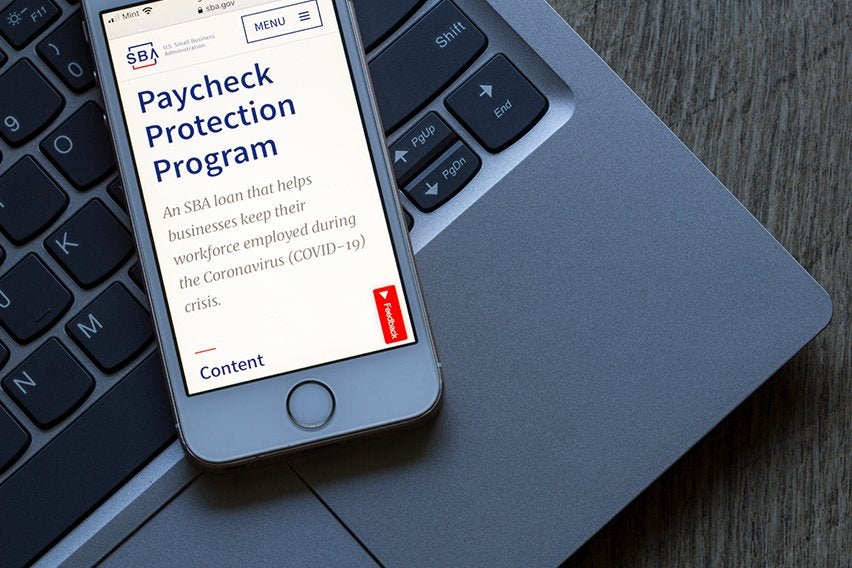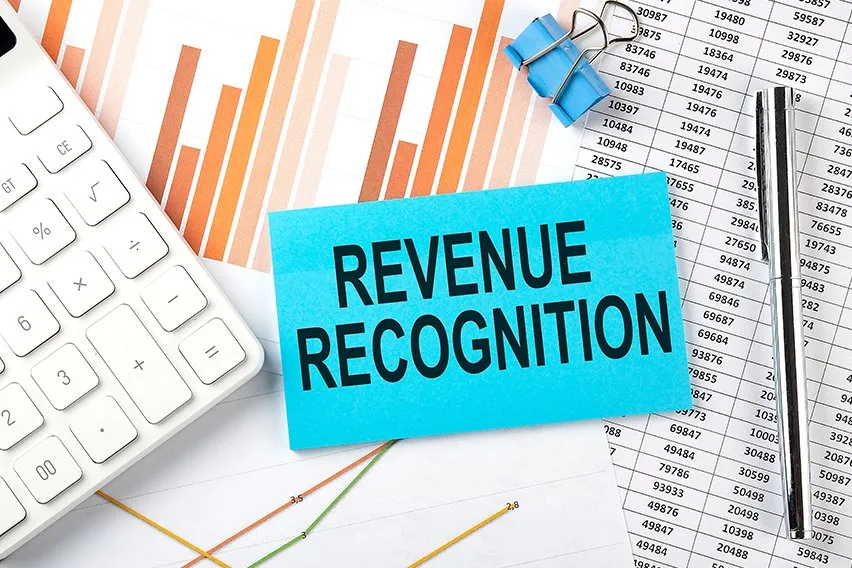What Is a Paycheck Protection Program? A Small Business Guide

Back on December 27th of 2020, the federal government signed into law a new bill. Within the bill was also the second stimulus plan for business owners, as well as the Paycheck Protection Program. But what exactly is this program, and what does it do?
That’s what we’re covering here today. You will learn all of the basics regarding the Paycheck Protection Program. So keep reading to find out how this plan affects you as a business owner.
Here’s What We’ll Cover:
What Is the Paycheck Protection Program?
Who Is Eligible for the PPP Loan?
Applying for the PPP Loan: What to Know
Applying for the PPP Loan Forgiveness
PPP Loan Forgiveness Requirements
What Is the Paycheck Protection Program?
This program is a loan program derived from the Coronavirus Aid, Relief and Economic Security Act, also known as the CARES Act. Originally a $350 billion plan, its purpose was to provide eight weeks’ worth of assistance in the form of cash flow.
But who was the program for? The Paycheck Protection Program was designed to help out small businesses in the United States. And it did so through 100% federally funded loans. Moreover, these loans had backing from the SBA (Small Business Administration).
The plan was expanded through both the Health Care Enhancement Act and Paycheck Protection Program. Occurring in late April, this act added an extra $310 billion in federal funding.
The Flexibility Act was part of the Paycheck Protection Program. It made critical changes to the protection program. In doing so, it gave more time for businesses to use the funds, thus making it easier to get full forgiveness of loans.
Following that addition on December 27, 2020, the second stimulus plan was signed. This gave an extra $285 billion in federal funding for the plan and updating eligible fees.
What’s more, it further opened a secondary PPP loan for companies that spent all of the initial PPP loan and had their income dropped by 25% or more.

Important Highlights
The following highlights are essential components related to the Paycheck Protection Program. This will give a better understanding of its guidelines and requirements. We’ll touch on each topic momentarily.
- No loan payments until the processing of your forgiveness application. Or, 10 months following your 24-week coverage period.
- The federal loan takes care of expenses for a period of 24 weeks. And it starts on the date of the loan disbursement.
- You may get loan forgiveness and turn the loan into a non-taxable grant.
- Any loan that was made after June 5, 2020 has a five-year length.
- There is a two-year maturity rate, as well as a 1% interest rate.
- No personal guarantees or collateral are required.
- Every small business is eligible.
- There aren’t any fees.
These guidelines ensured that small business owners could make full use of the loan in various ways. Let’s continue on to discuss the loan in greater detail. First, let’s begin with eligibility requirements.
Who Is Eligible for the PPP Loan?
PPP loans are a lot more in-depth compared to SBA disaster loans. For example:
- Small businesses
- Independent contractors
- Sole proprietorships
- Individuals who are self-employed
Sole proprietorship needs to submit Schedule C of the tax return that it has submitted (or will submit) to show net profit of sole proprietorship. In addition to Schedule C, independent contractors must also submit the Form 1099-MISC (now 1099-NEC in 2020). And self-employed persons must also submit a payroll tax return to the IRS.
The second withdrawal of PPP loans in 2021 introduces key conditions. Companies wishing to apply for a second PPP loan need to show a reduction in income of 25% or more. This will be shown by comparing revenue for any quarter in 2020 with the same quarter in 2019.
For example, suppose a company’s sales revenue in the second quarter (Q2) of 2019 was $20,000. If their sales revenue in the second quarter of 2020 is $15,000 or less, they will be eligible for PPP funding.
How to Use the PPP Loan
For starters, you must use at least 60% of the PPP loan for funding your small business’s payroll. This also includes costs associated with employee benefits.
However, the 40% leftover can be used in the following ways:
- Property damage expenses (such as public disturbances that aren’t covered by your insurance)
- Operations expenditures. This can include things like accounting software needs
- Supplier costs (for example: cost of goods sold)
- Worker protection expenditures
- Payments on mortgage interest
- Payments for rent or lease
- COVID compliancy
- Utility payments
If you adhere to these guidelines, you will be able to waive the loan 100% (effectively turning it into a tax-free grant). Please note that as part of the application, you will be required to prove that you will use the funds in an appropriate manner. If you do not use the funds in the correct way, you may be accused of fraud.
What Are Payroll Costs?
As per the PPP loan, payroll costs include the following:
- For any sole proprietor or independent contractor. Each employee’s net income, salary, commission, or income related to self-employment is capped at $100k per year.
- Employee benefits (vacation, family, childcare, medical leave, sick leave for severance or dismissal).
- Salary, tips, hazard pay, bonuses, wages, and commissions (up to $100,000 per employee per year).
- Payment required for group medical benefits (insurance premiums).
- State and local taxes based on compensation assessment.
- Payment of any retirement benefits.
As you can see, the vast majority of payroll needs are covered by the PPP loan. That said, there are some specific circumstances that the PPP loan does not cover, including:
- Payments made out to independent contractors.
- S- and C-Corp business owners not on payroll. This is because shareholder distributions aren’t considered payroll under the PPP.
As we mentioned a moment ago, there is a $100,000 cap on salaries. Let’s look into this in greater detail and what it means.
$100k Salary Cap
In the event that either you or one of your employee’s annual salary in 2019 or 2020 exceeds $100,000, you may only apply for $100,000 (not more than this amount).
Therefore, if an employee’s income is $120,000, you will subtract $20,000 from the employee’s salary for PPP purposes. As such, this will give you an average monthly salary of $8,333.33 ($100,000 ÷ 12).
If you are either an independent contractor or sole proprietor without a payroll set up, Also, if your net profit in 2019 or 2020 exceeds $100,000, you will also be limited to $100,000 (divide by 12 and you will get $8,333.33. This is your average monthly salary).
Is There a PPP Limit?
Yes. The total amount that you can get from a creditor approved by the SBA is your average monthly salary cost in 2019 or 2020 (or a year before your application).
You would need to multiply this by 2.5. However, there is a cap at $2 million. If you are a business owner who is in the food and lodging industry, you are eligible for slightly more. As such, you would get 3.5 times the average salary cost, also at a cap of $2 million.
If you are a seasonal employer, the calculation of average monthly salary costs will be different. Instead, you may use any period of 12 weeks that took place between February 15 of 2019 and February 15 of 2020.
Applying for the PPP Loan: What to Know
Please note that the SBA doesn’t actually lend you money. Instead, it goes through authorized lenders. The purpose of the SBA in this regard is to back the loan that you receive. So if you default on the loan, the SBA will cover the costs to a certain extent.
On the PPP loan application, you will be presented a series of questions. It is important that you know how to answer each section. Below are the essentials that every small business owner should know before applying.
- Within 24 weeks of obtaining the loan, you can verify how many full-time (or equivalent) employees you have on payroll. You will also need to provide: wage costs, mortgage interest covered, rent covered, and utility expenses covered.
- These funds will help you retain employees and maintain your payroll. Furthermore, you may need the loan to help you pay utility bills, mortgages, or leases.
- You verify and agree that the lender will use the tax documents you submit to calculate the eligible loan amount. Moreover, you confirm that the tax documents are the same as the documents you turned into the IRS.
- You agree that the current uncertainty of the economy makes the PPP loan a necessity to ensure support of your continued operations.
- If applying for the secondary PPP loan draw, you agree that you have used up the funds for the first PPP loan draw.
Be sure that you have all applicable documents handy before applying. In doing so, it will make the application process much easier.
What You Will Need
As stated, there are specific documents that you will need. These will help you prove your payroll situation. Such documentation may include but isn’t limited to:
- Tax forms related to payroll (Forms W-3, 940, and 941) Must be for between 2019 and 2020.
- Schedule C (sole proprietorship only).
- Records of payroll processor.
- Records of Form 1099-MISC.
- Tax filings for your payroll.
Do you have employees that you pay via payroll? Do you also pay yourself via payroll? The best way to get the information you need is to download a payroll report from your company’s payroll provider.
Are you self-employed and have yet to submit a complete Schedule C? You might need to perform retrospective bookkeeping. This will allow you to calculate the net profit of Schedule C.
If you don’t perform bookkeeping, it is very difficult to get an accurate read on your net profit. Fortunately, you can download FreshBooks to assist you with this. FreshBooks puts powerful accounting tools in the palm of your hand. As such, you can get the data you need to ensure that you fill out the application the right way.

Applying for the PPP Loan Forgiveness
Lastly, we want to touch on what you need to do to apply for PPP loan forgiveness. After 24 weeks of signing your loan, you can have any of the following expenses forgiven:
Payroll
This includes:
- Health benefits
- Parental leave
- Medical leave
- Hazard pay
- Sick leave
- Vacation
- Bonuses
- Wages
- Family
- Salary
The personal salary is capped at $100,000 per year.
Mortgage Interest: This applies only if you signed the mortgage prior to February 15, 2020.
Rent: This applies only if the lease agreement is valid before the date of February 15, 2020.
Utilities: Your utility service must have started before February 15, 2020.
Operating Expenses: Includes any software, accounting or HR needs, or cloud computing expenses.
Property Damage Expenses: Losses caused by public disturbances in 2020. Remember, these damages must be those that are not covered by your insurance provider.
Supplier Costs: This includes any essential purchase orders or orders for goods that you made before obtaining your PPP loan.
Worker Protection Expenses: From March 1, 2020. Any PPE items or improvements to your property in an effort to maintain COVID compliance.
As you can see, there are a few guidelines you need to adhere to in order to apply for loan forgiveness. It’s important that you make sure your accounting needs are in order. This will help you in the application process.
Remember, FreshBooks can give you the edge you need to ensure that you are well prepared. You’ll find accounting and payroll tools that are essential for any small business owner.
PPP Loan Forgiveness Requirements
As its name implies, the PPP loan program serves to protect paychecks. Therefore, you will need to maintain an average number of employees. This includes full-time workers. You may also maintain above the average. And you must do so for a period of one year.
Furthermore, 60% of your PPP loan must go toward maintaining your payroll. But, if you reduce your number of employees, the forgivable amount will also reduce. Also, if you reduce wages over 25%, your amount that can be forgiven will also be cut back.
Did you re-employ an employee who was previously dismissed at the start of the period? Did you reinstate the beginning of the period or any reduction in salary? If so, you will not be punished for reducing employees or wages.
For any loans that were received in 2020, the deadline is December 31, 2020. For any loans that were received in 2021, the cut-off date is the ending of your coverage period.
Key Takeaways
The Payroll Protection Program helped many small business owners when they needed help. Do you qualify for a PPP loan? It’s important that you take advantage of this program if you are struggling. It’s designed to assist people in your situation and give you the relief you need.
If you are having a hard time figuring out your accounting info, be sure to check out FreshBooks. Everything you need is right at your fingertips to help you. What’s more, FreshBooks excels at bookkeeping, employee time management, client invoices, and a lot more.
The user interface is easy to learn and works well to help you balance your numbers. If you are interested in learning more about small businesses, be sure to check out our Resource Hub. There, we cover a wealth of topics to make your life easier.
RELATED ARTICLES
 Obsolete Inventory: How to Identify & Avoid It
Obsolete Inventory: How to Identify & Avoid It How to Write a Business Plan: A Complete Guide
How to Write a Business Plan: A Complete Guide What is Supply Chain Analytics, and Why is it So Important?
What is Supply Chain Analytics, and Why is it So Important? What Is a POS Purchase? A Definitive Guide
What Is a POS Purchase? A Definitive Guide What Is Business Negotiation? Top 10 Successful Tactics
What Is Business Negotiation? Top 10 Successful Tactics Revenue Recognition: Definition, Principles & Example Guide
Revenue Recognition: Definition, Principles & Example Guide